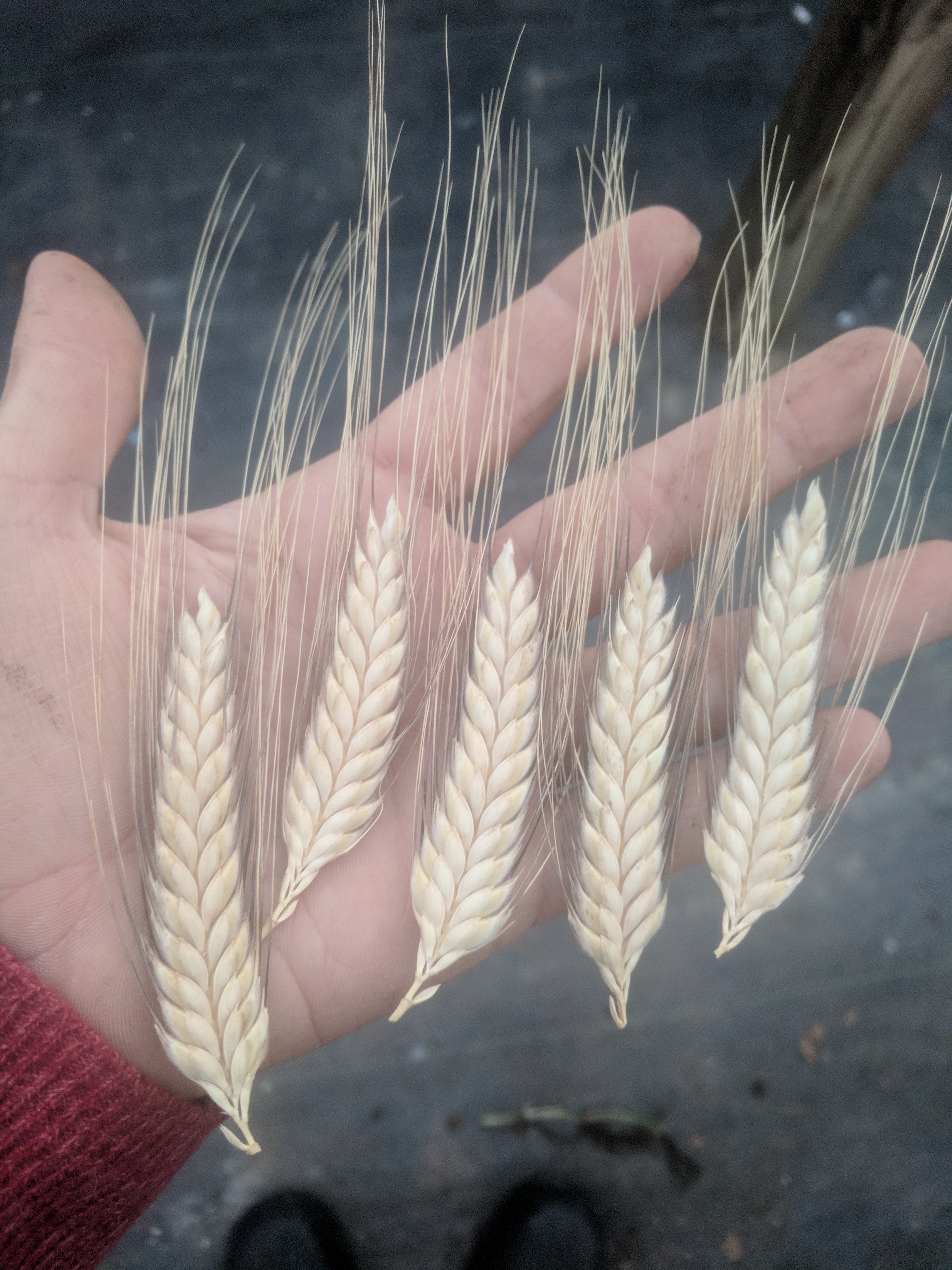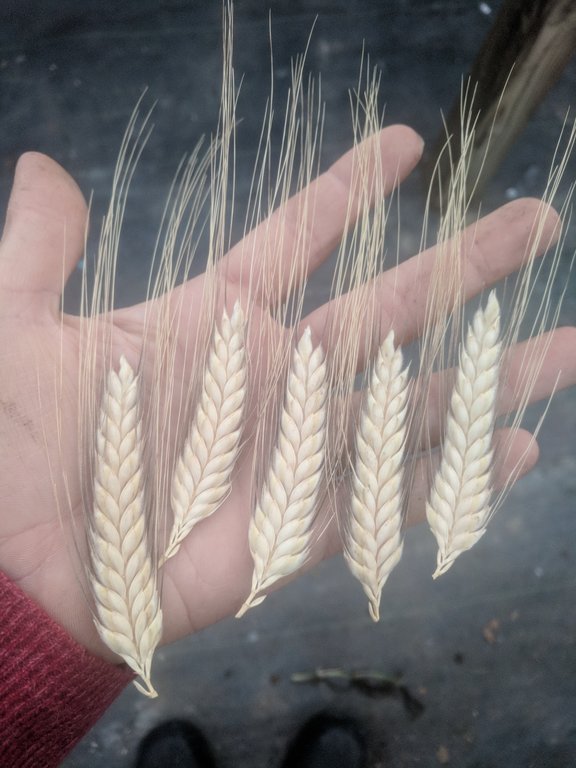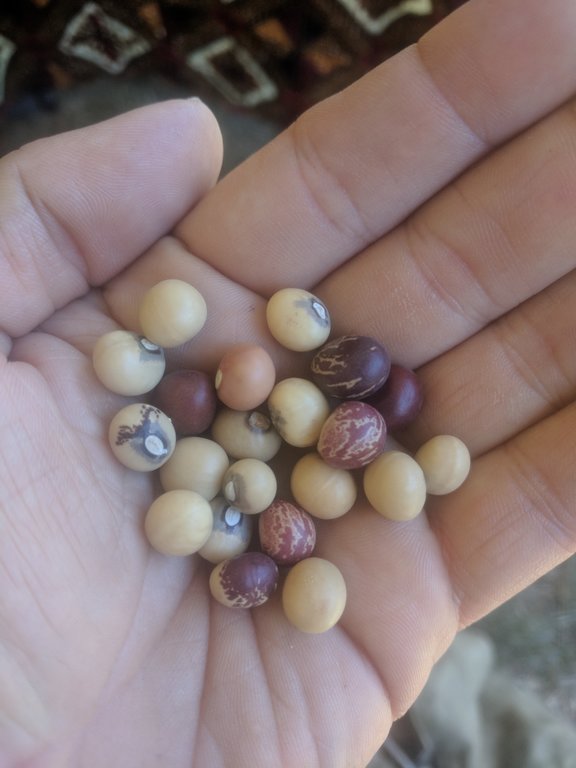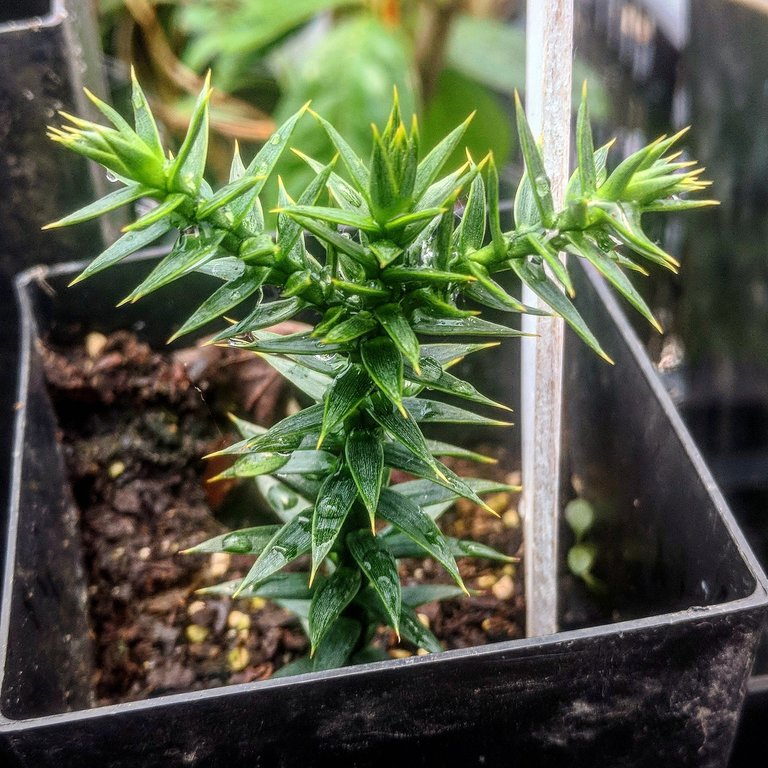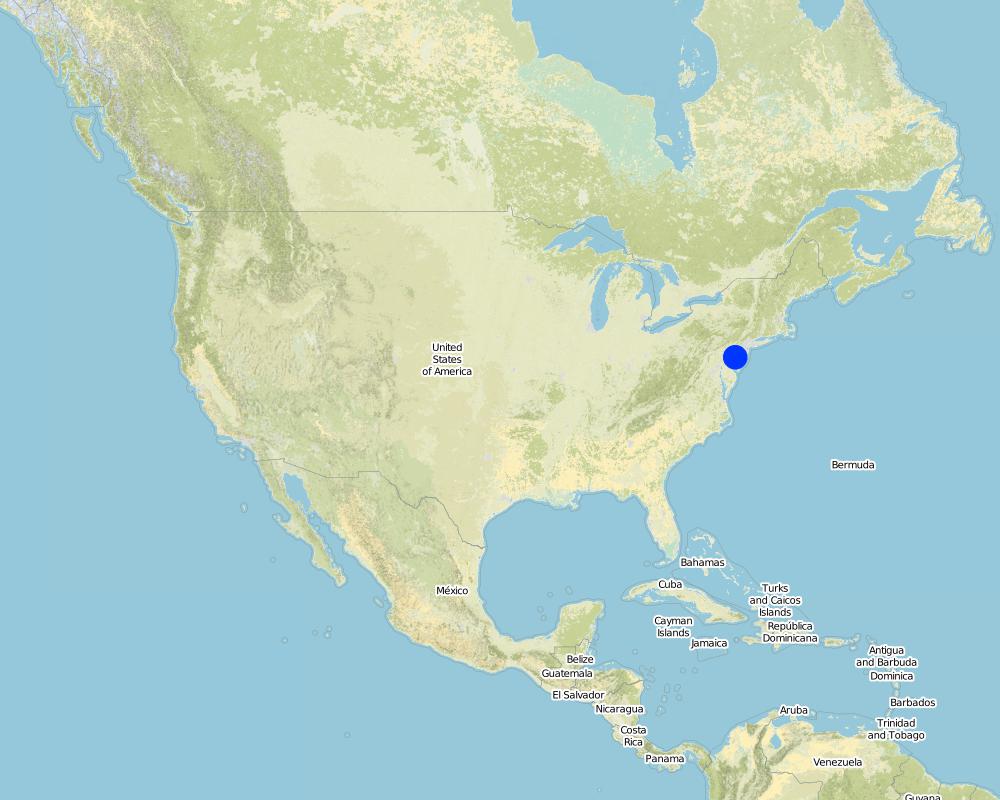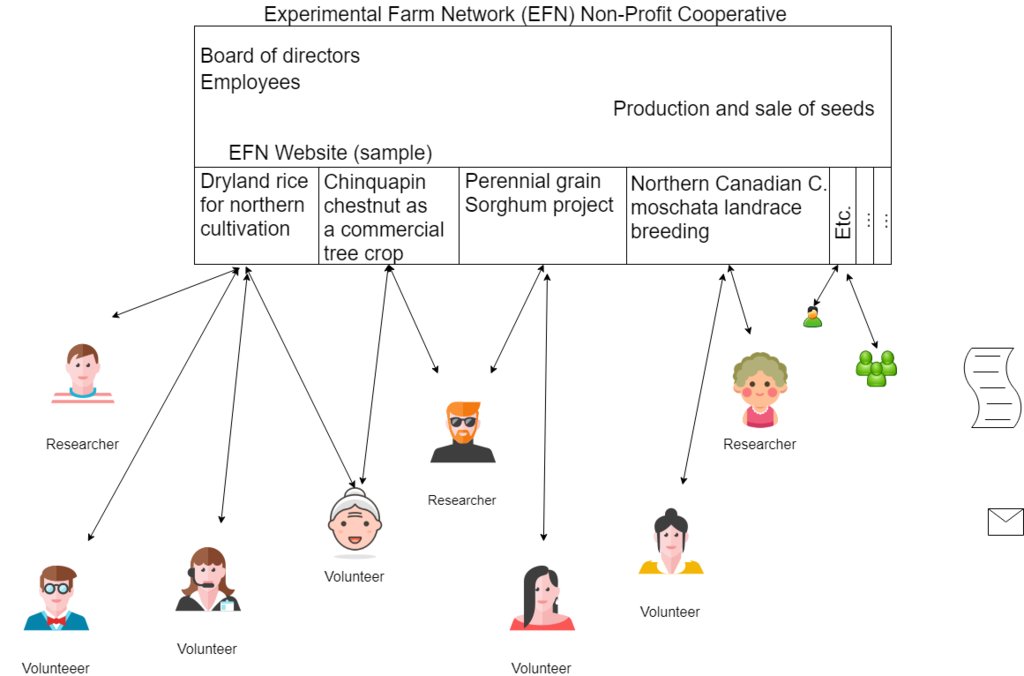Experimental Farm Network for collaborative plant breeding and sustainable agriculture research. [Estados Unidos]
- Creación:
- Actualización:
- Compilador: Stefan Graf
- Editor: –
- Revisor: Alexandra Gavilano
approaches_4199 - Estados Unidos
Visualizar secciones
Expandir todo Colapsar todos1. Información general
1.2 Detalles de contacto de las personas de referencia e instituciones involucradas en la evaluación y la documentación del Enfoque
Persona(s) de referencia clave/s
Usuario de la tierra:
Kleinman Nate
nathankleinman@gmail.com / https://www.experimentalfarmnetwork.org/
Experimental Farm Network
Estados Unidos
Nombre de la(s) institución(es) que facilitaron la documentación/ evaluación del Enfoque si fuera relevante)
Bern University of Applied Sciences, School of Agricultural, Forest and Food Sciences (HAFL) - Suiza1.3 Condiciones referidas al uso de datos documentados mediante WOCAT
¿Cuándo se compilaron los datos (en el campo)?
09/11/2018
El compilador y la/s persona(s) de referencia claves aceptan las condiciones acerca del uso de los datos documentados mediante WOCAT :
Sí
2. Descripción del Enfoque MST
2.1 Breve descripción del Enfoque
The Experimental Farm Network is an online platform facilitating collaborative plant breeding as well as other sustainable agricultural research.
2.2 Descripción detallada del Enfoque MST
Descripción detallada del Enfoque MST:
The experimental farm network started when Nate Kleinman and Dusty Hinz saw the threats of climate change, and wanted to have an agriculture able to cope with it. Breeding for crops like trees, or perennial wheat, takes decades and is often part of university programs which phase out with the retirement of the responsible person. These are the reasons which lead the two to build up a decentralized network for plant breeding and other experimental farming techniques.
The network is online based, open source, and with a free access to everyone having an internet connection. In the network, there are two positions for each project: researcher and volunteer. A researcher who wants to start a project describes the goals, the needs from the volunteers, and the required climatic and soil conditions. A volunteer, who has a profile where the growing conditions are described, can sign up for the project. The researcher can then contact the volunteers which seem suitable, and send genetic material. Usually, the work involves planting the seeds, growing it out, measuring some characteristics (size, yield, etc.) and sending a part of the seeds with some data back.
The EFN is organized as a non-profit cooperative with two permanent employees and a board of advisors. The sources of income were initially a crowdsourcing and the sale of seeds. Financially it is not yet totally self-carrying, as the employees are working sometimes for free. With the increase of seed sales, also from experimental and diverse varieties, it is changing.
The website helps putting people in touch and keeping records of who is working on which project, as well as for volunteers to stay updated with the projects. Some projects, with annuals, are only short term, while others, for example with slow growing perennials, may need decades if not more to produce a selected cultivar or variety of a crop.
2.3 Fotos del Enfoque
2.5 País/ región/ lugares donde el Enfoque fue aplicado
País:
Estados Unidos
Especifique más el lugar :
This is where the non-profit cooperative is registered. Projects take place around the world, in the USA, Canada and Australia so far.
Comentarios:
The Network is global, with members in the USA, Australia as of 2018. Shown is Philadelphia, where the non-profit cooperative is registered.
Map
×2.6 Fechas de inicio y conclusión del Enfoque
Indique año del inicio:
2013
Si no se conoce el año preciso, indique la fecha aproximada en la que se inició el Enfoque:
hace menos de 10 años (recientemente)
2.7 Tipo de Enfoque
- iniciativa local reciente/ innovadora
2.8 Propósitos/ objetivos principales del Enfoque
Develop farming systems for a future, while tackling problems with climate change.
2.9 Condiciones que facilitan o impiden la implementación de la/s Tecnología/s aplicadas bajo el Enfoque
normas y valores sociales/ culturales/ religiosos
- facilitan
More and more people are aware of the problems with the narrow genetics of current varieties.
colaboración/ coordinación de actores
- facilitan
It only works as collaborative projects.
- impiden
Some volunteers do not return seeds, it is difficult to get reliable people.
conocimiento de MST, acceso a apoyo técnico
- facilitan
The exchange of the different actors in plant breeding and sustainable farming enables the work of the experimental farm network
carga de trabajo, disponibilidad de mano de obra
- facilitan
Many breeding projects can only be done on huge areas, for example tree breeding. Spreading the workload on many people, all of them having only a limited work, enables to make
3. Participación y roles de las partes interesadas involucradas
3.1 Partes interesadas involucradas en el Enfoque y sus roles
- usuarios locales de tierras/ comunidades locales
Volunteers
Volunteers help researchers with their experiments, for example by looking out for promising wild specimen, by growing out varieties under specific conditions to assess the resistance, by selecting experimental varieties, or by similar work.
- organizaciones comunitarias
The non-profit cooperative "Experimental Farm Network"
Provides an online platform where researchers and volunteers can meet.
- investigadores
Researchers
They can find volunteers if more people are needed to carry out an experiment, specially in plant breeding for sustainable farming.
Si varias partes interesadas estuvieron involucradas, indique la agencia principal:
The non-profit cooperative "Experimental Farm Network" has the lead, but each researcher leads his or her own project.
3.2 Involucramiento de los usuarios locales de tierras/ comunidades locales en las distintas fases del Enfoque
| Involucramiento de los usuarios locales de tierras/ comunidades locales | Especifique quién se involucró y describa las actividades | |
|---|---|---|
| iniciación/ motivación | auto-movilización | |
| planificación | interactivo | |
| implementación | interactivo | |
| monitoreo y evaluación | ninguno |
3.3 Flujograma (si estuviera disponible)
Descripción:
The Experimental Farm Network is organised as a Non-Profit Cooperative. It consists of a board of directors overseeing the the whole, and of employees. The EFN lives from donations and from the sale of seeds which are cultivated on kindly lent land.
The EFN has a website, experimentalfarmnetwork.org, on which researchers can create an account describe projects for which they want volunteers. Volunteers can also creat an account, on which they describe their soil and climatic conditions. Researchers can then contact volunteers and ask them for help. The work for the volunteer often involves growing recieved seeds and send back records about the growth, and send back seeds to the researcher. The volunteers and researcher can connect trough the website, but some work as well trough other networks like facebook.
Autor:
Stefan Graf
3.4 La toma de decisiones en la selección de Tecnología(s) MST
Especifique quién decidió la selección de las Tecnología/ Tecnologías a implementarse:
- principalmente usuarios de tierras con el apoyo de especialistas MST
Explique:
Each volunteer grows a crop only if he or she wants to grow it, and gets support for it.
Especifique las bases que sustentaron la toma de decisiones:
- la evaluación de conocimiento MST bien documentado (la toma de decisiones se basa en evidencia)
- hallazgos de investigaciones
- la experiencia personal y opiniones (no documentadas)
4. Apoyo técnico, fortalecimiento institucional y gestión del conocimiento
4.1 Construcción de capacidades / capacitación
¿Se proporcionó la capacitación a usuarios de tierras/ otras partes interesadas?
Sí
Especifique quién fue capacitado:
- usuarios de tierras
Forma de capacitación:
- Support for the volunteers
Temas avanzados:
Depending on the crop grown, the researcher helps with information about how best to grow it.
4.2 Servicio de asesoría
¿Los usuarios de tierras tienen acceso a un servicio de asesoría?
No
4.3 Fortalecimiento institucional (desarrollo institucional)
¿Se establecieron o fortalecieron instituciones mediante el Enfoque?
- sí, moderadamente
- Online
Describa la institución, roles y responsabilidades, miembros, etc.
The online network was established within the approach.
4.4 Monitoreo y evaluación
¿El monitoreo y la evaluación forman parte del Enfoque?
No
4.5 Investigación
¿La investigación formó parte del Enfoque?
Sí
Especifique los temas:
- ecología
Proporcione detalles adicionales e indique quién hizo la investigación:
Breeding is always research for better adapted crops or varieties.
5. Financiamiento y apoyo material externo
5.1 Presupuesto anual para el componente MST del Enfoque
Indique el presupuesto anual para el componente del MST del Enfoque (en US$):
10000,00
Comentarios (ej. fuentes principales de financiamiento/ donantes principales):
Crowdsourcing was used in the beginning, now the sale of seeds is taking over in supporting the cooperative financially.
5.2 Apoyo financiero/material proporcionado a los usuarios de tierras
¿Los usuarios de tierras recibieron financiamiento/ apoyo material para implementar la Tecnología/ Tecnologías? :
No
5.3 Subsidios para insumos específicos (incluyendo mano de obra)
- agrícola
| Especifique qué insumos se subsidiaron | En qué grado | Especifique los subsidios |
|---|---|---|
| semillas | parcialmente financiado | Depending on the project, seeds are given and a return of the subsequent generation asked. |
Si la mano de obra de usuarios de tierras fue un insumo sustancial, ¿fue:
- voluntario?
5.4 Crédito
¿Se proporcionó crédito bajo el Enfoque para actividades MST?
No
5.5 Otros incentivos o instrumentos
¿Se usaron otros incentivos o instrumentos para promover la implementación de Tecnologías MST?
No
6. Análisis de impacto y comentarios de conclusión
6.1 Impactos del Enfoque
¿El Enfoque empoderó a los usuarios locales de tierras, mejoró el involucramiento de las partes interesadas?
- No
- Sí, un poco
- Sí, moderadamente
- Sí, mucho
¿El Enfoque ayudó a los usuarios de tierras a implementar y mantener Tecnologías MST?
- No
- Sí, un poco
- Sí, moderadamente
- Sí, mucho
¿El Enfoque construyó/ fortaleció instituciones, colaboración entre partes interesadas?
- No
- Sí, un poco
- Sí, moderadamente
- Sí, mucho
¿El Enfoque mejoró la capacidad de los usuarios de tierras a adaptarse a los cambios climáticos/ extemos y mitigar desastres relacionados al clima?
- No
- Sí, un poco
- Sí, moderadamente
- Sí, mucho
6.2 Motivación principal del usuario de la tierra para implementar MST
- conciencia medioambiental
- conocimiento y capacidades mejorados de MST
6.3 Sostenibilidad de las actividades del Enfoque
¿Pueden los usuarios de tierras sostener lo que se implementó mediante el Enfoque (sin apoyo externo)?
- incierto
Si respondió no o incierto, especifique y comente:
It depends on the project, but usually the land users can continue to grow the crops they are testing as a part of the network.
6.4 Fortalezas/ ventajas del Enfoque
| Fuerzas/ ventajas/ oportunidades desde la perspectiva del usuario de la tierra |
|---|
| Allows farmers who are isolated on the countryside to have research projects together with others. |
| Allows a decentralized approach, in which the research can continue even if the initial researcher did not continue. |
| Fuerzas/ ventajas/ oportunidades desde la perspectiva del compilador o de otra persona de referencia clave |
|---|
| The transparency allows other projects to be inspired to do similar breeding projects. |
6.5 Debilidades/ desventajas del Enfoque y formas de sobreponerse a ellos
| Debilidades/ desventajas/ riesgos desde la perspectiva del usuario de la tierra | ¿Cómo sobreponerse a ellas? |
|---|---|
| Some volunteers only take the seeds, and do not give back as promised. | EFN wants to implement a rating system for volunteers, in a way that researchers can see if they are reliable. |
| Some people do not want to create an account in another social network. | They can contact some researchers directly, and work without having an account. This requires more organisational work for the researchers, but is done by some. |
| Debilidades/ desventajas/ riesgos desde la perspectiva del compilador o de otra persona de referencia clave | ¿Cómo sobreponerse a ellas? |
|---|---|
| As an english speaking platform, it crosses many countries, while some seed regulation do not allow imports or translocations of genetic material due to the risks of disease transfer. | Arrange the platform into countries where adequate. |
7. Referencias y vínculos
7.1 Métodos/ fuentes de información
- entrevistas con usuarios de tierras
- entrevistas con especialistas/ expertos en MST
- compilación de informes y otra documentación existente
Reading trough the website.
7.2 Referencias a publicaciones disponibles
Título, autor, año, ISBN:
Plant Breeding and Farmer Participation, Ceccarelli et al., 2009,ISBN 978-92-5-106382-8
¿Dónde se halla disponible? ¿Costo?
http://www.fao.org/docrep/012/i1070e/i1070e00.htm
7.3 Vínculos a la información relevante disponible en línea
Título/ descripción:
Experimental Farm Network website.
URL:
https://www.experimentalfarmnetwork.org/
Vínculos y módulos
Expandir todo Colapsar todosVínculos
No hay vínculos
Módulos
No se hallaron módulos


